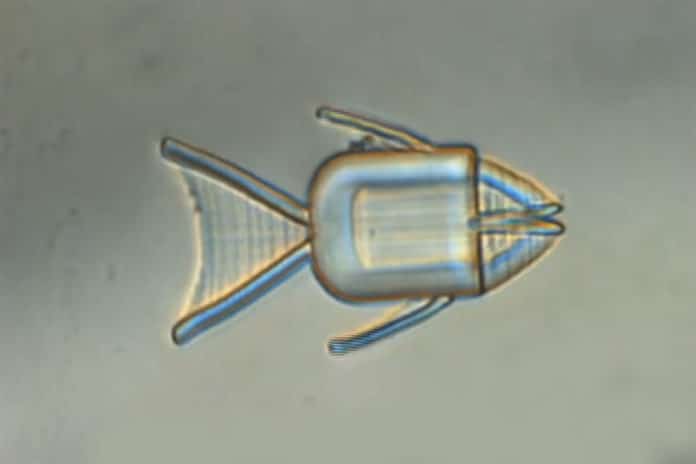Chemotherapy is one of the most common and most powerful forms of cancer treatment that successfully treats many types of cancer. While chemotherapy drugs are busy killing cancer cells, they can also wreak havoc on the rest of the body. Delivering drugs directly to cancer cells could help reduce these unpleasant side effects of chemotherapy.
In a proof-of-concept study, researchers have developed fish-shaped microrobots guided with magnets to the cancer cell and release their chemotherapy cargo. Because tumors exist in acidic microenvironments, the team decided to make the microrobots change shape in response to lowered pH.
The microrobots are made of a pH-responsive hydrogel 3D printed into the shape of different animals, such as a crab, butterfly, or fish. The team encoded pH-responsive shape morphing by adjusting the printing density at certain areas of the shape, such as the edges of the crab’s claws or the fish’s mouth, so that they can open or close in response to changes in acidity. Then, they made the microrobots magnetic by placing them in a suspension of iron oxide nanoparticles.
In the lab tests, the researchers demonstrated various capabilities of the microrobots in several tests. For example, a fish-shaped microrobot had an adjustable “mouth” that encapsulated the drug by closing its mouth in phosphate-buffered saline and releasing the drug by opening its mouth in a slightly acidic solution. The team showed that they could steer the fish through simulated blood vessels to reach cancer cells at a specific region of a petri dish. When they lowered the pH of the surrounding solution, the fish opened its mouth to release a chemotherapy drug, which killed nearby cells.
Although the study is promising proof of concept, the microrobots need to be made even smaller to navigate actual blood vessels, and a suitable imaging method needs to be identified to track their movements in the body, the researchers say. With the continuous optimization of size, motion control, and imaging technology, these magnetic shape-morphing microrobots will provide ideal platforms for complex microcargo operations and on-demand drug release.
